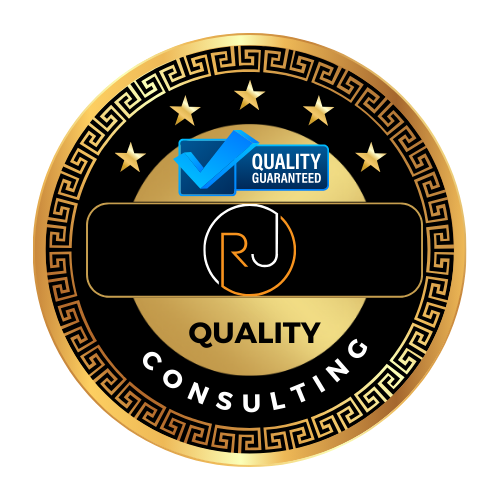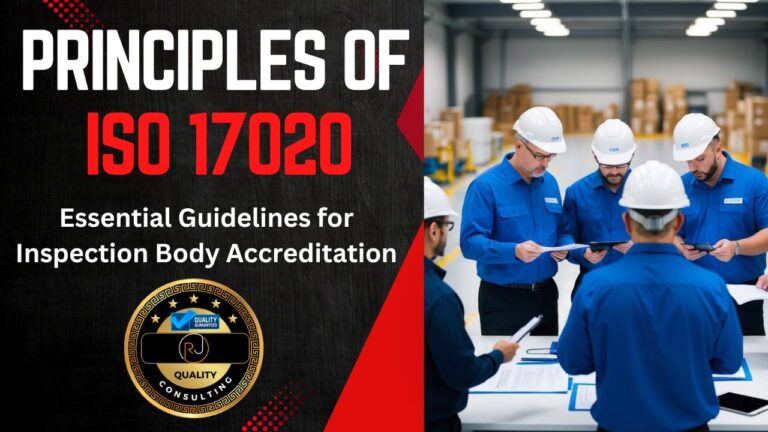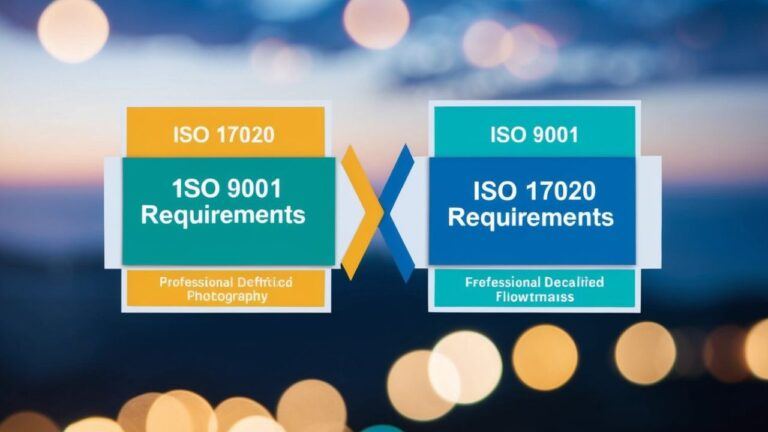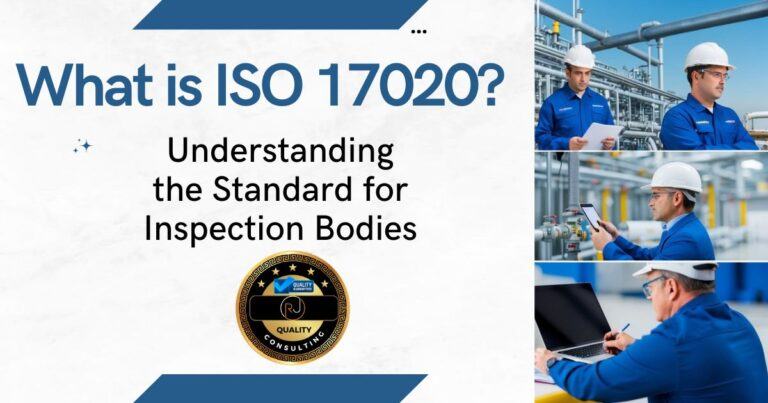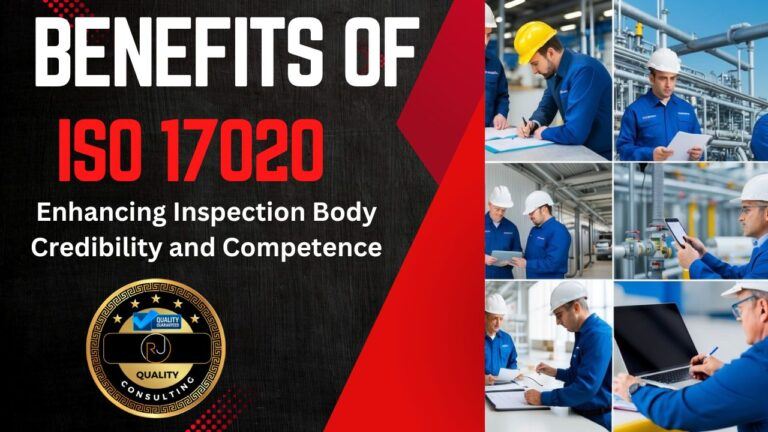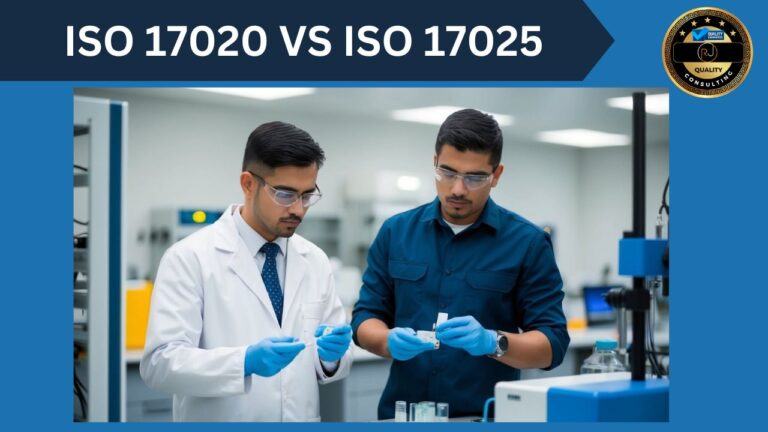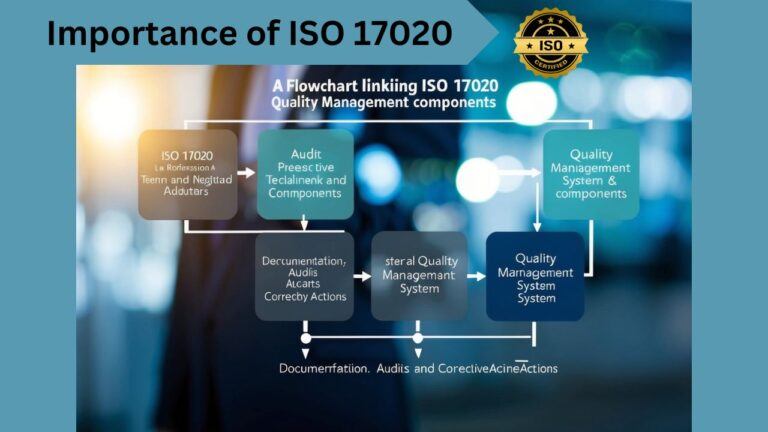ISO 17020 Implementation: Key Steps for Inspection Body Compliance
ISO 17020 implementation is a crucial process for inspection bodies seeking to demonstrate their competence and impartiality. This standard sets out the requirements for organizations that perform inspections across various sectors. By implementing ISO 17020, inspection bodies can enhance their credibility and ensure consistent, high-quality inspection activities.

Implementing ISO 17020 starts with a strong commitment from top management. This commitment is key to success, as it ensures the necessary resources and priority are given to the process. The standard covers areas like management systems, personnel qualifications, and inspection processes, all aimed at promoting confidence in the inspection body’s work.
For inspection bodies, ISO 17020 implementation offers a path to accreditation. This can open up new opportunities and help build trust with clients and stakeholders. The process may seem complex, but with proper planning and dedication, it can lead to significant improvements in an organization’s operations and reputation.
Key Takeaways
- ISO 17020 sets standards for inspection bodies’ competence and impartiality
- Top management commitment is essential for successful implementation
- Accreditation can boost an inspection body’s credibility and opportunities
What is ISO 17020? – Understanding ISO/IEC 17020:2012

So, what is ISO 17020? ISO/IEC 17020:2012 sets standards for inspection bodies. It helps make sure these groups do their work well and fairly.
The standard covers three main steps of inspection:
- Planning and preparation
- Performing the inspection
- Reporting and follow-up
These steps are key to all inspections. ISO/IEC 17020:2012 creates a system to support them.
Inspection bodies can be different types:
- Type A: Independent third-party
- Type B: In-house inspection unit
- Type C: Separate part of an organization that provides inspection services
To meet the standard, you need to show:
- Your staff are qualified
- You have good equipment
- You keep clear records
- You protect confidential information
Getting accredited to ISO/IEC 17020:2012 proves you can do inspections well. It helps build trust in your work.
The standard fits with other conformity assessment rules. This makes it easier for inspection bodies to work across different fields.
Requirements for Inspection Bodies

ISO 17020 sets out key requirements for inspection bodies to ensure quality, consistency, and reliability. These cover areas like impartiality, competence, facilities, and confidentiality.
Impartiality and Conflicts of Interest
You must maintain objectivity in your inspection activities. This means avoiding any conflicts of interest that could affect your judgment. Set up systems to identify and manage potential conflicts. Don’t let commercial or other pressures compromise your work.
Keep your inspection activities separate from other business functions. Make sure your staff understand the importance of impartiality. Have them sign agreements to report any potential conflicts.
Document your impartiality policies and procedures. Review them regularly to ensure they remain effective. Be ready to show how you maintain independence and integrity in your inspections.
Confidentiality and Security
You need to protect sensitive information obtained during inspections. So, set up strict confidentiality policies for all staff. Make sure they sign agreements to keep client information private.
Use secure systems to store and transmit inspection data. Control access to sensitive documents and records. Then, train your staff on information security best practices.
Let clients know how you’ll use and protect their data. Get their permission before sharing any details. Have procedures to handle breaches if they occur.
Finally, keep inspection records safe for the required time period. Dispose of old records securely when no longer needed.
Competence and Personnel
Your staff must have the right skills and knowledge to perform inspections. So, set clear job requirements for each role. Then, check qualifications and experience when hiring.
Provide ongoing training to keep skills up to date. This includes technical knowledge and inspection techniques. Also, test competence regularly through assessments or supervised inspections.
Keep detailed records of staff qualifications and training. Then, have procedures to authorize staff for specific inspection tasks. Make sure they stay current on relevant standards and regulations.
Finally, monitor staff performance and address any issues quickly. Provide feedback and support to help them improve.
Facilities and Equipment
You need proper facilities and equipment to carry out inspections effectively. So, ensure your premises are suitable for the type of work you do. They should allow for safe and accurate inspections.
Maintain all inspection equipment properly. Calibrate devices regularly to ensure accuracy. Also, keep records of maintenance and calibration activities.
Control access to inspection areas and equipment. Then, have procedures for handling and storing items being inspected. Make sure your facilities meet any relevant safety or environmental standards.
Use appropriate software and IT systems to support your work. Keep them secure and up to date. Then, train staff on how to use equipment and systems correctly.
Development of a Management System

A strong management system is key for ISO 17020 implementation. It guides your processes and helps you meet the standard’s requirements. Your system should cover all aspects of inspection activities.
Adoption of ISO 9001 Principles
ISO 9001 principles form the base of your ISO 17020 management system. So, focus on customer satisfaction, leadership, and staff involvement. Then, use a process approach to link your activities. Make choices based on evidence. And work to always get better.
Set clear quality goals. Train your team on quality basics. Then, check your work often. Fix problems fast when you find them. Finally, keep good records of what you do.
Think about how each part of your business affects quality. Then, look for ways to make your processes smoother. Ask customers what they think and use their feedback.
Documentation Requirements
Your system needs clear, written rules. So, make a quality manual that explains your policies. Then, write down how you do each task. Finally, keep forms and checklists handy.
Key documents include:
- Quality policy
- Inspection procedures
- Equipment lists
- Staff training records
- Internal audit plans
Keep your docs simple and easy to use. Update them when things change. Then, make sure everyone can find the info they need.
Use a numbering system for your docs. Track changes with version numbers. And have a process to approve new or updated docs.
Process Mapping and Gap Analysis
Map out how you do inspections now. Look at each step from start to finish. Then, find spots where you might miss ISO 17020 rules.
Steps to map your process:
- List all inspection tasks
- Draw a flow chart
- Note who does each task
- Mark where you make decisions
- Show where you keep records
Compare your current ways to ISO 17020 rules. Then, make a list of gaps. Plan how to fix each one. This helps you know what to change.
Set deadlines for updates. Then, assign someone to lead each change. Finally, check progress often.
Control of Records
Good record control proves you follow the rules. So, set up a system to make, store, and find records easily. Decide how long to keep each type.
Important records include:
- Inspection reports
- Equipment checks
- Staff qualifications
- Customer complaints
Use secure storage for sensitive info. Back up digital files often. Then, train staff on proper record-keeping.
Set rules for who can see or change records. Use a log to track any changes. Then, make sure old versions don’t get mixed with current ones.
Check your records system in audits. Fix any problems you find right away.
ISO 17020 Implementation Inspection Procedures

Putting inspection procedures into practice is key for ISO 17020 compliance. It involves creating detailed steps and making sure they work well. This process helps inspection bodies carry out their activities in a consistent and reliable way.
Procedure Development
Start by writing down each step of your inspection process. Then, break complex tasks into smaller parts. Use clear language that’s easy for staff to follow. Include things like:
- Equipment needed
- Safety rules
- How to record results
Make checklists for inspectors to use. This helps them remember every step. Then, update procedures as laws or best practices change. Get input from experienced inspectors to improve your procedures.
Validation and Testing
Try out your new procedures before using them for real inspections. This helps find any problems. Here’s how to test:
- Have different inspectors use the procedure
- Compare their results
- Fix any parts that cause confusion
Time how long each step takes. Make sure the procedure is practical. Then, test in different conditions, like bad weather for outdoor inspections. Finally, use mock scenarios to practice unusual situations.
Keep track of how well the procedures work over time. Then, ask for feedback from inspectors and clients. Make changes as needed to improve accuracy and efficiency.
Quality Assurance and Control

Quality assurance and control are vital for ISO 17020 implementation. These processes help inspection bodies maintain high standards and continually improve their services.
Internal Audit Program
Your internal audit program is key to checking if your inspection body meets ISO 17020 requirements. So, set up a yearly audit schedule. Then, pick trained auditors who know the standard well. They should check all parts of your system, from paperwork to field inspections.
During audits, look at records, watch inspections, and talk to staff. Note any issues you find. Good points are worth noting too. Then, write clear audit reports that list findings and suggest fixes.
Use audit results to make your system better. Then, track how well you fix problems found in audits. This shows you’re serious about quality.
Management Review Meetings
Hold management review meetings at least once a year. These meetings help you check if your quality system works well. So, invite key staff and leaders to join.
Look at reports from internal audits, customer feedback, and staff performance. Then, check if you’ve met your quality goals. Talk about any changes that might affect your inspection work.
Make choices about how to improve your system. This might mean changing procedures, getting new equipment, or training staff. Then, write down what you decide and who will do each task.
Keep records of these meetings. They show you’re actively managing quality.
Corrective Actions Management
When you find problems, fix them fast. So, set up a system to track issues and their solutions. This helps you spot patterns and prevent repeat problems.
For each issue, find out why it happened. Don’t just fix the symptom – look for the root cause. Then, make a plan to fix it for good.
Check if your fixes work. Did they stop the problem from coming back? If not, try a different approach.
Finally, keep records of all corrective actions. Show what the problem was, what you did, and how you checked it worked. This proves you’re committed to getting better all the time.
Accreditation and Ongoing Compliance

Getting ISO 17020 accreditation is a big step. But the work doesn’t stop there. You need to keep up with the rules and prove your skills over time.
Navigating the Accreditation Process
To get ISO 17020 accreditation, you’ll need to follow some steps. First, pick an accreditation body. They’ll check if you meet the standard. Get ready by looking at your current ways of working. Then, fix any gaps you find.
Next, you’ll need to send in your application. The accreditation body will look it over. They’ll visit your site to see how you work. This visit is called an assessment.
If you pass, you’ll get your accreditation. But remember, this is just the start. The whole process can take 6-12 months. Working with an expert can make it faster.
Surveillance and Recertification
After you get accredited, you’ll have regular checks. These are called surveillance audits. They make sure you’re still following the rules.
The accreditation body will visit you every year or two. They’ll look at your work and records. They want to see that you’re still doing a good job.
Every few years, you’ll need to get recertified. This is a bigger check. It’s like getting accredited all over again. But if you’ve been keeping up with the rules, it should be easier.
Maintaining Technical Competence
ISO 17020 is all about being good at what you do. So, you need to keep your skills sharp. This means ongoing training for your team.
Set up a plan for regular training. This could be classes, workshops, or on-the-job learning. Then, keep records of all training.
You should also stay up to date with new tech and methods in your field. Join industry groups. Go to conferences. Read trade journals.
Finally, test your team’s skills regularly. This could be through mock inspections or quizzes. If you find weak spots, work on fixing them.
Conclusion

ISO 17020 implementation is a key step for inspection bodies. It helps you meet international standards and improve your services. By following this standard, you can boost your credibility and efficiency.
The process may seem complex, but it’s worth the effort. You’ll need to focus on areas like impartiality, competence, and quality management. These changes can lead to better results for your clients.
Remember, ISO/IEC 17020:2012 is about more than just meeting requirements. It’s a tool for continuous improvement. You can use it to find weak spots in your processes and make them better.
Accreditation bodies play a big role in this journey. They’ll check if you’re following the standard correctly. This outside view can be really helpful for your growth.
Technical competence is a major part of ISO 17020. You’ll need to make sure your staff has the right skills and knowledge. This can lead to more accurate inspections and happier customers.
In the end, implementing ISO 17020 can give you a real edge. It shows you’re committed to quality and can be trusted. This can open up new opportunities and help your business grow.
Frequently Asked Questions about ISO 17020 Implementation

ISO 17020 accreditation involves key requirements, processes, and documentation. Organizations need to understand the standard’s specifics and how to implement them effectively.
What are the key requirements for ISO 17020 accreditation?
ISO 17020 focuses on impartiality, competence, and consistency in inspection activities. You must have a clear organizational structure and management system.
Your inspection body needs qualified personnel and proper equipment. You also need to maintain confidentiality and have a complaint handling process.
How does ISO 17020 differ from ISO 9001 in terms of inspection body requirements?
ISO 17020 is specific to inspection bodies, while ISO 9001 is a general quality management standard. ISO 17020 has more detailed requirements for inspection processes and impartiality.
It also emphasizes technical competence and the handling of inspection items. ISO 9001 doesn’t cover these inspection-specific aspects.
What is the ISO 17020 accreditation process for inspection bodies?
The process starts with a self-assessment of your current practices. You then need to implement the standard’s requirements and create necessary documentation.
Next, you apply to an accreditation body. They will review your documents and conduct on-site assessments. If you meet all requirements, you’ll receive accreditation.
What are the mandatory documents needed for ISO 17020 compliance?
You need a quality manual outlining your management system. Other required documents include inspection procedures and work instructions.
You also need records of personnel qualifications and training. Equipment calibration records and inspection reports are crucial too.
How can an organization prepare a quality manual that meets ISO 17020 standards?
Your quality manual should describe your management system and how you meet ISO 17020 requirements. Start by outlining your organization’s structure and policies.
Include sections on resource management, inspection processes, and quality control. Make sure to cover all aspects of the standard in a clear, organized manner.
What steps are involved in an ISO 17020 internal audit?
First, plan the audit and select qualified auditors. Then, review your documents and processes against ISO 17020 requirements.
Next, conduct on-site observations and interviews. Record any findings and non-conformities. Finally, develop an action plan to address any issues found during the audit.
